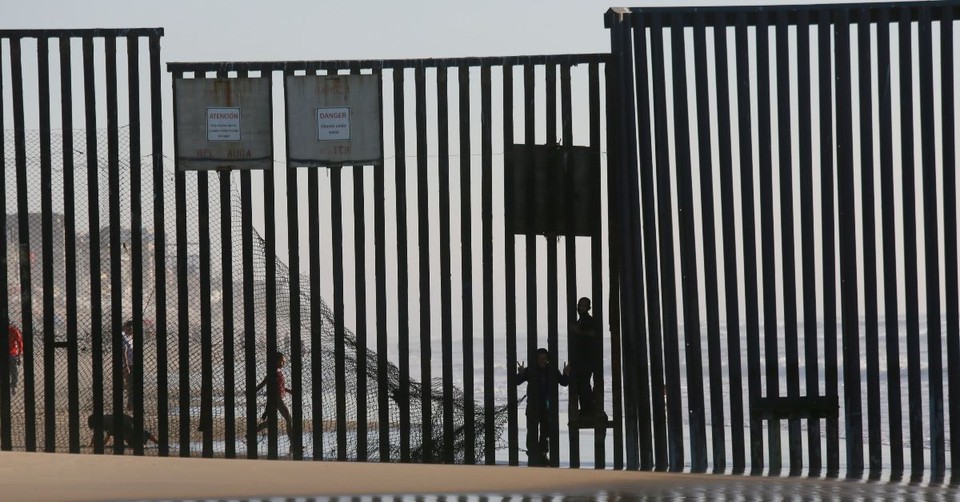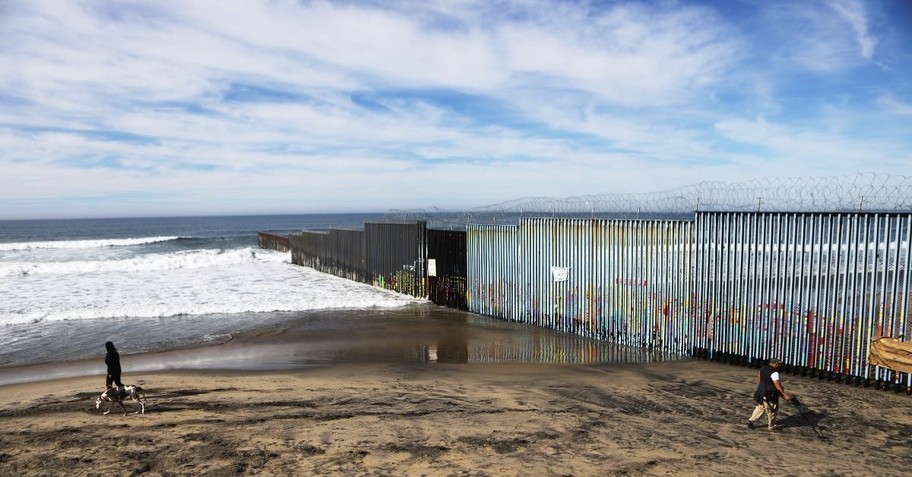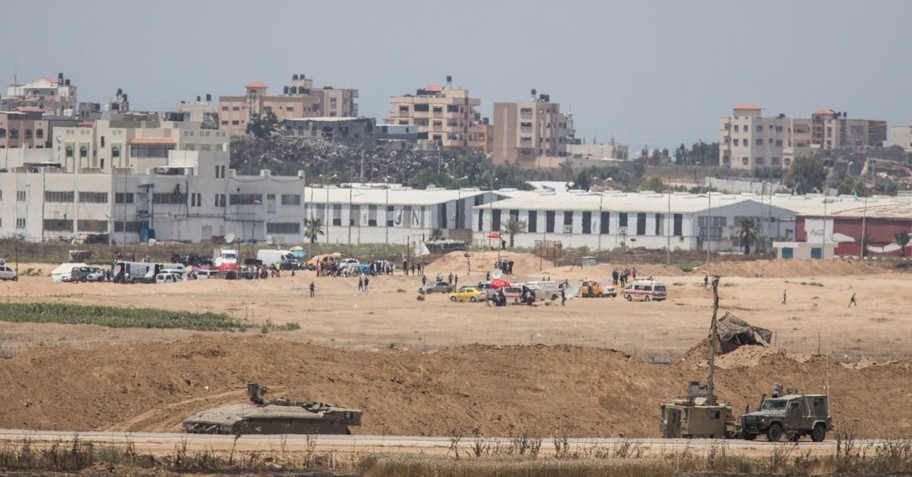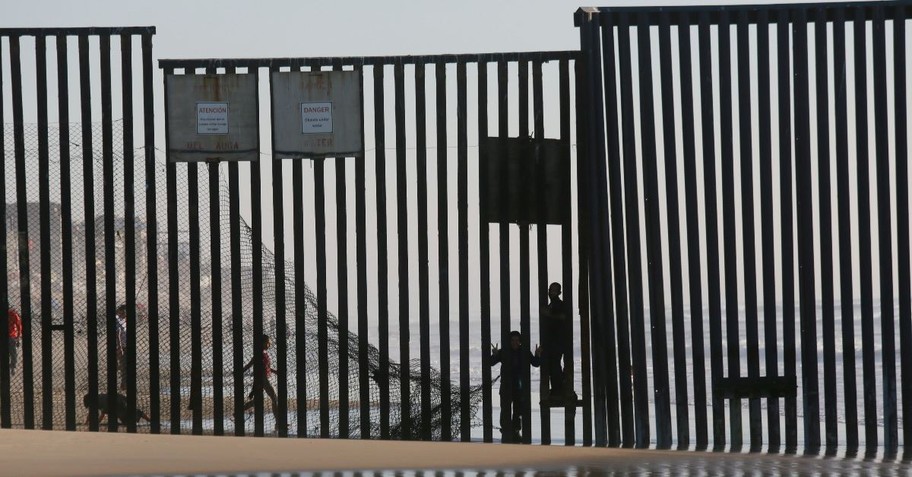4 Pros and 4 Cons for the U.S.-Mexico Border Wall

The government shutdown may have temporarily ended, but conversations about the U.S.-Mexico border are far from over.
According to the New York Times, the government will remain open only until February 15, unless House and Senate Democrats and the President can come to an agreement on funding for the southern border wall.
Here are 4 pros and 4 cons for the U.S.-Mexico border wall
Photo courtesy:Getty Images/Sandy Huffaker/Stringer
Pros

1. Homeland Security
The creation of the wall is expected to decrease the amount of risk being imposed on the U.S. A double-layer protective wall coupled with high-tech security devices and cameras will make crossing into the United States illegally via land barriers both more difficult and more expensive. Increased cost and difficulty is excepted to, in turn, make crossing into the U.S. via land a less appealing and less accessible method for traffickers and terrorists.
Photo courtesy: Getty Images/Mario Tama/Staff

2. Drug Cartels, Gangs and Guns
It is well known that much of the illegal substances in the United States have been brought into the country from Mexico. According to CNN, “Mexican drug cartels take in between $19 billion and $29 billion annually from drug sales in the U.S.”
According to Politifact, the Trump administration reports that there are more than 10,000 MS-13 gang members across 40 states. MS-13, whose motto is “kill, rape and control," was founded in Los Angeles in the 1980s by refugees from civil wars in El Salvador, Guatemala and Nicaragua. Politifact reports that experts told them “that the growth of MS-13 in the United States is related to draconian policies in Guatemala, Honduras and El Salvador that pushed many gang members out of Central America”
Law enforcement officers have indicted MS-13 members in the U.S. for crimes including murder, assaults and arson, among other things. The goal of the wall is to decrease the number of dangerous criminals including gang members and drug, gun and human traffickers from entering the country.
Photo courtesy: Pexels

3. Historical cases of wall building shows that they can and do work
Daniel Horowitz of the Conservative Review points to Israel’s double-layered wall as an example of how the wall on our southern border can be successful. He said, “Nowhere is the case for the double-layered security-style fence more compelling than with the Israel security fence. Between 2000 and 2005, suicide bombers infiltrated Israel almost on a daily basis. Over 1,000 Israelis were killed and countless thousands wounded – the equivalent of 42,000 fatalities and hundreds of thousands wounded in America if extrapolated from the population size.”
“The situation was desperate….until they built their security fence,” he added. “After construction of the fence, a double-layer barrier with a security zone in the middle – similar to the San Diego fence, suicide attacks perpetrated by Arab terrorists declined by well over 90%,” the Senior Editor argued.
U.S. Representative Duncan Hunter pointed out the effectiveness of San Deigo’s double layered border wall as an example of how the U.S.-Mexico wall can work.
He said in an article in the San Diego Union-Tribune, “One of San Diego’s greatest assets is the double-layered border fence that extends inland from the Pacific Ocean. Fencing and infrastructure alone are by no means enough to stop illegal crossings, but the presence of physical impediments at the border, when supported by manpower and technology, create barriers that make entry increasingly more difficult and sometimes impossible.”
Photo courtesy: Getty Images/Ilia Yefimovich/Stringer

4. Economy
According to Thought Co., illegal immigration costs the United States an estimated $113 billion in lost tax revenue a year. The outlet also reports that Illegal immigration also puts an extreme burden on social welfare programs, the health-care system and education programs. Building the wall could slow illegal immigration lowering the loss of tax revenue.
Additionally, the economy will be positively impacted by the creation hundreds, if not thousands, of jobs for the construction of the wall.
Photo courtesy: Pixabay
Cons

1. Cost
The amount of money needed for the border wall is largely unknown. Predictions have been made ranging from $2 billion to $30 billion, but the reality is no one really knows how much it will end up costing to cover the entire 1,900 miles of border between the U.S. and Mexico. As a part of his platform, President Trump made a campaign promise that Mexico would pay for the extensive wall. The Mexican government refused to pay, however, leaving the American people to pay for the border wall. Initially, President Trump was asking for $7 billion to cover 650 miles of fencing. During negotiations during the government shutdown, Trump lowered his number to $5 billion for the first section of the wall. With a high price tag and without a firm number for the cost of the wall, many people are skeptical, some are even questioning if its effectiveness would be worth its hefty price.
Photo courtesy: Unsplash

2. Wildlife Endangerment
Wildlife biologist and nature conservationist Jeff Corwin raised the question of how the wall will affect animals in 2017. In an interview with MSNBC, Corwin said, “If this border wall actually happens, it will be an environmental catastrophe. Essentially, what it's doing is cutting through nature's bridge, which connects Central America to North America and South America. Wildlife have been using this natural corridor for millions of years. And, essentially, what this administration wants to do is put a twelve-hundred-mile-long barrier right through it. Think of all the different species and creatures that migrate for resources, for reproduction, for seasonality.”
According to Thought Co., nearly 30 environmental laws will be curbed for the building of the wall and several species of animals will be put at risk for endangerment and extinction because their migration and mating patterns will be disrupted.
Photo courtesy: Unsplash

3. Illegal Immigration won't end
According to the Customs and Border Protection division of the Department of Homeland Security, 310,531 people attempting to enter the country illegally were apprehended at the southwest border in 2017. This is compared to the 606,926 people who the Department of Homeland Security estimates overstayed their visas in the 2017 fiscal year. This means that nearly two times more people stay in the U.S. with expired visas than enter the country illegally by land. While the border wall will undoubtedly decrease the number of illegal immigrants coming into the country via land, illegal immigration will still be a big problem in the United States, and without immigration policy reform, the wall can only do but so much.
Photo courtesy: Getty Images/Sandy Huffaker/Stringer

4. Economy
According to PBS, while first-generation illegal immigrants cost the government more money than native-born Americans, second-generation Americans are “among the strongest fiscal and economic contributors in the U.S.” Additionally, the Institute on Taxation and Economic Police estimate that illegal immigrants pay some $11.6 billion in taxes annually and are less likely to take public benefits than native-born Americans. Finally, as the minimum wage raises across the nation, fewer Americans are seen doing essential physical labor jobs as compared to illegal immigrants.
Immigration has long been one of the most divisive topics among Americans. While most every American can agree that immigration reform is needed, there has been a lack of consensus on how to reform the system.
Photo courtesy: Unsplash
Originally published January 30, 2019.








